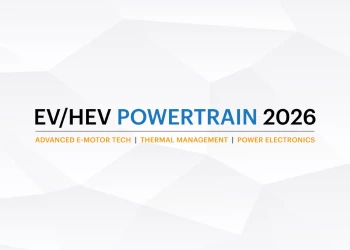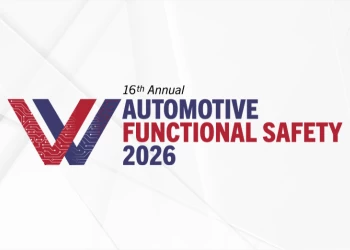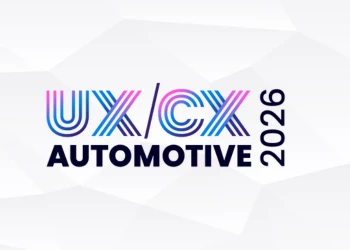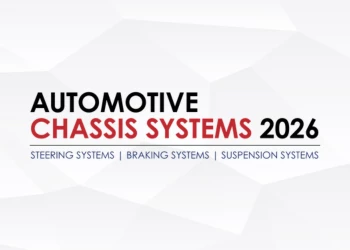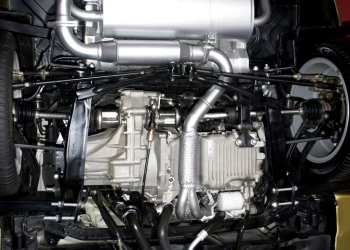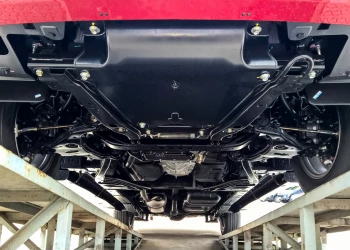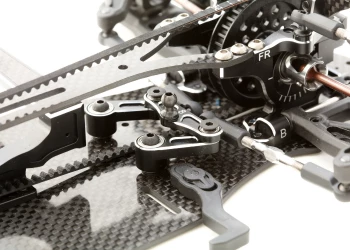
Automotive IQ recently interviewed Praful Bari, Head of Application Engineering Steering, Americas at ZF Group, to discuss the latest suspension and steering products that have recently been launched. Praful shared insights into the innovations driving these new solutions and how they’re helping to address some of the industry’s most pressing challenges.
What suspension and/or steering products have you launched over the past year or so that fleets are really excited about?
Praful: ZF has been developing torque overlay systems to enhance steering responsiveness and comfort since 2006, and continues to refine its torque overlay systems and extend its availability. ColumnDrive (released in 2006) was the first iteration of ZF’s torque overlay system. ReAX-C replaced ColumnDrive in 2020 and has expanded to highway tractor applications since then. The gear-based version, ReAX-G, was recently released for production in Europe and Asia and will soon be introduced in North America and is a good base for autonomous commercial vehicles towards L4 autonomy.
Electrically Powered Hydraulic Steering (EPHS) is another exciting product ZF recently launched for the global commercial vehicle market. EPHS uses an electric motor to drive a hydraulic pump, eliminating the need for a traditional power take-off (PTO), which is driven by the combustion engine. This makes it ideal for hybrid and electric commercial vehicles, while also helping to reduce parasitic losses and improve fuel efficiency in conventional platforms.
What types of commercial fleet vehicles can these products be found on?
Praful: Today, ReAX-C torque overlay is available on transit buses in Lafayette, New York, Atlanta, Grand Rapids, Chicago, and various major US cities, class A type higher-end motorhomes, and certain Kenworth and Peterbilt trucks. Recently, ReAX-G has reached customers in Europe and Asia Column and gear mounted ReAx (ReAX-C and ReAX-G) have been utilized by Level 4 autonomous vehicle developers, including Kodiak. EPHS is in use on class 5 to 8 vehicles globally. What driver/fleet pain points do each of the products address?
ReAX torque overlay opens the doors to advanced driver assist features such as lane keep assist, hands-off detection, cross-wind, and road crown compensation. These features reduce the strain on drivers and can even be used for autonomous driving. ReAx is a solid contributor to help improve safety and comfort in commercial vehicles.
EPHS is beneficial for addressing packaging limitations and fuel economy targets for traditional powertrains, but especially for providing hydraulic assist steering to alternative fuel applications. The electrically driven power steering pump is a game changer for vehicles that may not have a constant power take-off like the constantly running ICE engine.
What are the specific innovations associated with these new products, and how do they address those pain points?
Praful: The ReAX torque overlay makes steering your vehicle smoother. It lets you turn the steering wheel easily when moving slowly or stopped. But when you're driving fast, it keeps the steering feeling stable and not too sensitive. Since drivers do not need to put in as much effort for steering, the steering wheel diameter can potentially be reduced.. A smaller steering wheel decreases the arc length required for turning, simplifying vehicle maneuverability and reducing the steering effort for the driver. Additionally a smaller steering wheel diameter improve ingress and egress to the driver's position, which is especially beneficial for transit buses and motorhomes.
The launch of ReAX-C for Kenworth and Peterbilt trucks also marks the first time that OnTraX (ZF’s Lane Keep Assist technology) is available for commercial vehicles in North America. Lane Keep Assist helps the driver maintain position in the travel lane, reducing the need for driver-controlled steering correction and long-term fatigue during a typical workday, aiming to improve safety on the road. EPHS has some benefits to steering feel as well, by decoupling hydraulic flow from an engine's speed and precisely controlling flow rate based on needs. The steering effort-based pump control optimizes fuel economy by adjusting the pump speed to match steering needs, thereby reducing unnecessary engine load and minimizing heat losses from recirculating excess flow within the pump. For pusher-type applications such as motorhomes or transit buses, EPHS is especially beneficial as the pump is independent of the vehicle’s engine and can be relocated closer to the vehicle’s steered axle, reducing the length of plumbing and fluid needed for the steering system.
What do fleets need to know with respect to maintaining, diagnosing and repairing these products?
Praful: ReAX products (gear and column alike) should require minimal maintenance over their lifetime. Calibration may be required after road wheel alignment or wheel, tire, and axle end stop changes.
These products are built upon legacy steering products well-established in commercial steering. The typical maintenance for the base column, pump, and steering gear should be followed. Given the recommended care and maintenance, the systems are expected to achieve the same durability targets as legacy ZF steering products.
EPHS does not require any additional maintenance compared to a typical hydraulic pump. However, additional care should be taken to protect electrical connections during service.
Do you have anything in development in the way of suspension or steering innovations that you can tease a little bit?
Praful:
Current Innovations: There is a general ask and market need for redundant as well as (full) electric steering systems in commercial vehicles. ZF is enhancing its steering systems for commercial vehicles by developing these steering solutions. The systems are part of ZF's strategy to integrate more deeply with its expanded portfolio of sensors, ADAS and braking systems, facilitating complete system integration tailored to commercial vehicle platforms. This strategic development aligns with the shift toward alternative fuels and more efficient powertrain technologies, promoting full-electric steering as a key component in modern commercial vehicles.
Future Developments: Full-Electric Steering: This technology is set to join alongside existing full-hydraulic steering and torque-overlay systems within ZF’s product offerings. It aims to deliver improved system design, performance, and efficiency for a variety of commercial applications.
Integration of Technologies: Upcoming plans include sophisticated integration strategies, where steering systems will interact seamlessly with other crucial vehicle systems, boosting overall vehicle dynamics, efficiency and safety, which is particularly important in commercial vehicle use cases.
Advanced Suspension Systems: The development plan includes combining Independent Front Suspension (IFS) with fully electric steering Systems. This integration is intended to provide unmatched handling and control, particularly advantageous for heavy commercial vehicles and buses.
Steer-by-Wire (SBW) and Level 4 Autonomy: ZF’s EPS is a major step in the direction to more electronically controlled steering and a stepping stone to Steer-by-Wire technology. Steer-by-wire removes the mechanical connection between the steering wheel and the steering gear. This technology is pivotal for achieving higher levels of autonomy, such as Level 4, enabling more adaptive cabin designs and enhanced electronic control over steering functions.
